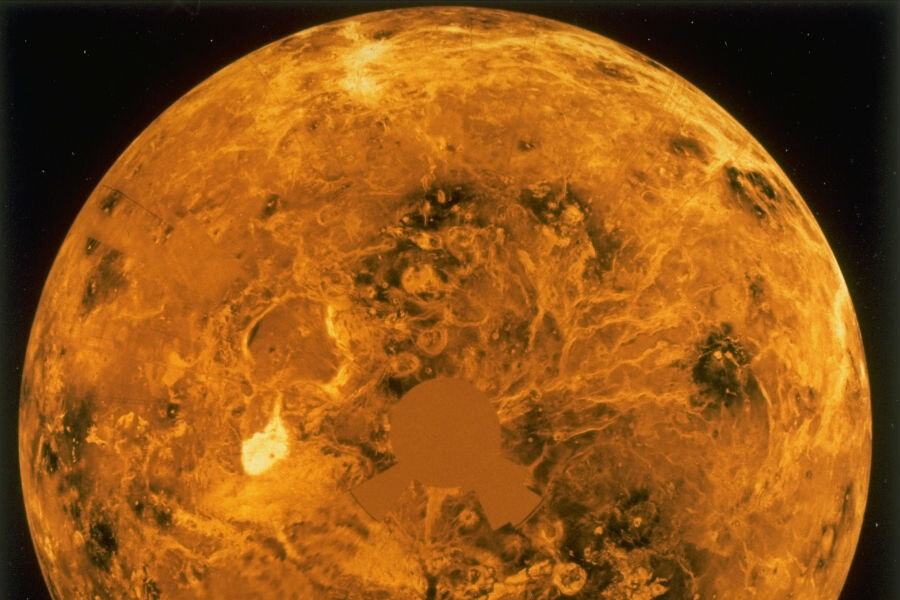Russia, US could collaborate on mission to Venus
Loading...
What Presidents Barack Obama and Vladimir Putin were discussing in that huddle at the G20 Summit earlier this week will likely remain a secret for some time. But could they have been talking about Venus?
While brinksmanship simmers over targeting the Islamic State in Syria and over the Kremlin's actions in Ukraine, NASA has reportedly "resumed discussions" in October with Russia about a possible joint robot-led mission to Venus in the late 2020s, Spaceflight Now reports. The annexation of Crimea had put the potential venture on hold, though cooperation with the International Space Station continued, scientists involved in the talks said.
So far, NASA has only committed to a one-year feasibility study, which will culminate in a report for top officials in NASA and in Russia's Moscow-based Space Research Institute (IKI). From there, officials will decide whether to pursue a cooperative mission to Venus, said Rob Landis, a program executive at NASA Headquarters, on Oct. 27, speaking from the Venus Exploration Analysis Group meeting in Washington.
The so-called "joint science definition team" reportedly convened in Moscow from Oct. 5-8, and scientists have slated two more in-person talks in Russia over the next year.
Scientists from the Russia's IKI are heading up Venera-D, which is being considered as a chance to both orbit and land on Earth's closest neighbor. NASA and IKI are also looking into whether the mission can accommodate a balloon that could to take wind and climate measurements from Venus's scorching atmosphere.
Russia has a storied past with Venus, while for the US, this feasibility study comes as a new distraction from America's first planetary love: Mars.
After nine failed tries at launching probes to Venus beginning in 1961, the Soviet Union's Venera 7 landed successfully on the planet in 1970 – marking the first successful landing and communication from another planet. The subsequent Venera 8, 9, and 10 probes also all landed safely, with number 9 returning the first photos of the Venusian surface, Ars Technica reports.
With the Venera-D mission, which Russia first began planning in 2004, Russia aspires to land a more durable spacecraft on the surface of Venus, which is a hostile environment in the best of circumstances. The “D” in the mission stands for "dolgozhivushaya," which means long-lasting. Venus's average surface temperature can top 860 degrees Fahrenheit, and surface pressure is 92 times what it is on Earth.
IKI Director Lev Zelyony told Russian news Interfax that a joint flight will be possible after 2025.
By teaming up with NASA, Russia reportedly hopes to split the cost burden. NASA, for its part, has identified research objectives that an orbit and possible landing may accomplish. The agency's Venus analysis group says its goal is to figure out how Venus diverged so dramatically from Earth, and relatedly, to further understand the "formation, evolution, and climate history on Venus."
“We made a lot of progress,” said David Senske, a scientist at NASA’s Jet Propulsion Laboratory who is the US co-chair of the Venera-D science definition team. “We heard a lot about what they had in mind. We’ve been told this is an IKI/Roscosmos endeavor, so they’re in the driver’s seat.”
NASA and IKI have a deadline: The joint team's report is due Sept. 30, 2016. Then a decision will be made as to whether a Russia-US mission to Venus is a go.








